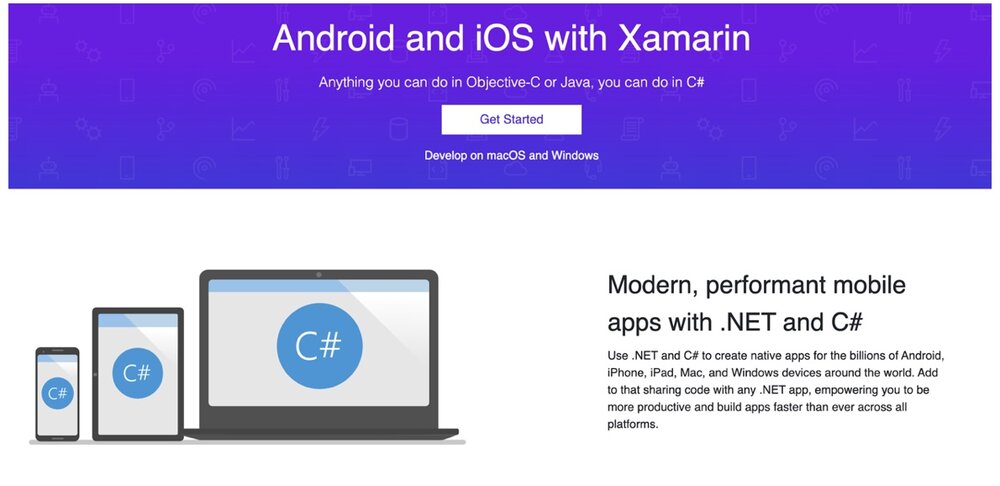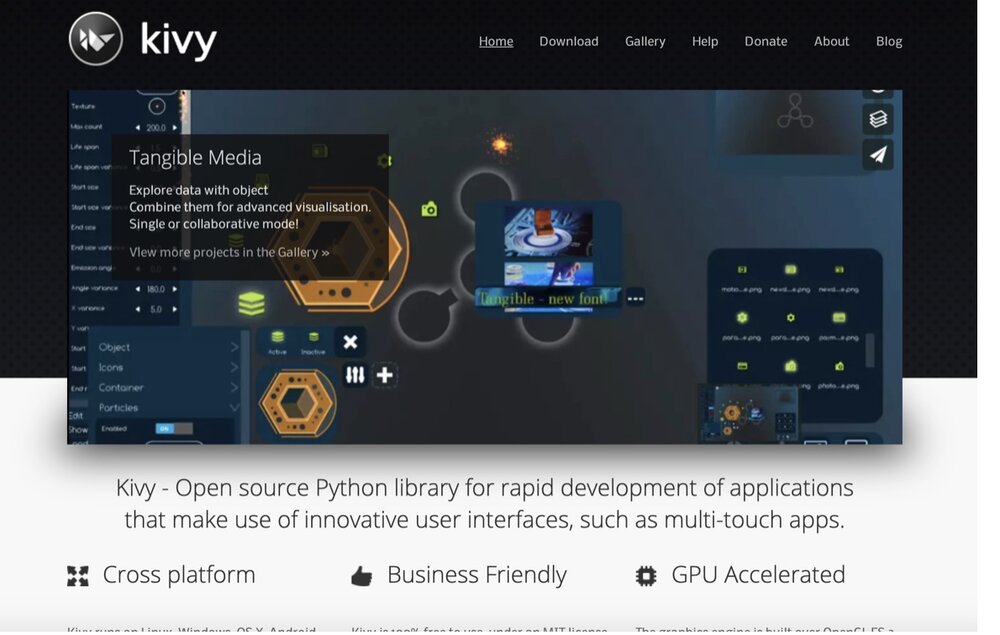By Angela Baker
Over the past five years, iOS has become the top mobile app development platform.
The reason is pretty obvious: most of us use iPhones and iPads, so many developers have chosen to work on apps for them. The popularity of iOS is pretty strong, too, as Apple sold an impressive 40.8 million iPhones in 2019.
Are you looking to develop an iOS mobile app, too? Okay, then chances are Google and/or your programmers friends have recommended a couple of options. For example, one of them must be Swift, the language developed and maintained by Apple itself
It’s good advice. Swift is great for building high-performing apps for all iOS devices, and, since its release in 2014, it became a preferred choice for the majority of programmers working in iOS app development.
Still, it’s not the only iOS app development language out there. Would you like to explore all options available to you? Check out this list.
C#

With this open-source, simple, safe, flexible, and object-oriented programming language, you can build native iOS apps. This became possible after the introduction of Xamarin, a complete iOS SDK for building mobile apps with C#, connect to macOS host, and even deploy apps with a remote iOS simulator for Windows.
Xamarin uses the same UI controls as in Objective-C (a programming language that Apple replaced with Swift, more on that later), but introduces the flexibility of a more updated language. It gives .NET developers access to iOS to create user interfaces to build fully native apps using C# and F#.
The heart of Xamarin is Forms, a cross-platform UI library that has everything you need to build iOS apps, including cross-platform navigation, messaging center, animation APIs, and other features to make views and layout look and behave naturally.
Apps built with Xamarin: Storyo, Insightly, FreshDirect.
Swift
As mentioned in the intro, Swift is the preferred programming language by most iOS developers out there.
Since its introduction 6 years ago, it has been enjoying immense popularity from both developers and huge corporations. In fact, Google caused a lot of stir a few years ago when the company announced that it was trying to take Swift and make it into its own version.

Getting attention like that from Google is definitely a sign that this language is something special.
So what makes Swift so special?
Anyone who has experience working with this language will tell you about these advantages:
-
It’s fairly easy to learn (especially for those who has experience developing iOS apps)
-
It’s functional and supports higher-order functions (flatMap, reduce, map, filter, etc.)
-
Supports custom argument labels in functions (makes the code more concise and easier to read)
-
The Swift compiler makes it possible to shorten the code, as it infers types for constants
-
It’s the fastest language in its performance (works almost 4 times faster than Python)
-
Easy documentation. Seriously, if you read Swift documentation, you’ll notice that it reads kinda like a book, much easier thanks to simple English
-
Works well with Linux
-
Supports dynamic libraries
-
Has the most uncomplicated syntax, which makes it easy to work with.
Also, don’t forget that it’s the iOS-native language, so you’ll have no issues with taking advantage of all UX principles and integrating your app into the design of the operating system.
Apps built with Swift: Airbnb, CNN, Candy Crush (+40 percent of all apps in the App Store)
Python
Even though iOS app development isn’t Python’s strongest suit (it wasn’t originally designed to enable this), it still is another option you should consider. To help you with using this language for writing apps, you should definitely use tools like Kivy and BeeWare. Those are open-source Python libraries for simpler app development that run on iOS, which means you can write your apps there using native interfaces.

Clearly, there are many Python enthusiasts who’d like to explore the advantages of this high-level, open-source language.
“A major advantage of using developing environments like Kivy and Beeware is that they allow releasing apps on multiple platforms,” says Ahmed Iwobi, an iOS developer lead at TrustMyPaper and Studicus. “This means that you don’t need to rewrite your application in other languages in case you want to make the app available on desktop or Android.”
So if you’re most comfortable using Python, its shortcomings as an app development platform won’t be an issue if you use some tools for help.
Python is highly regarded as one of the best options for creating FinTech apps for data analysis, insurance, and banking. Scalability and standards used for maintaining code make it a popular option in the FinTech industry.
C++
C++ is not really an iOS app development language. But that doesn’t mean that you can create iOS apps; you just need to use it with a built-in C++ library.
Visual Studio is one of them. There, you can develop iOS, Android, and Windows apps in one environment, which would be helpful for businesses looking to create products for multiple popular platforms.

Visual Studio executes, deploys, and debugs commands and transfers files by communicating with a remote agent running on Mac.
Here’s why you should think of this platform for your programming needs:
-
Migrate existing C++ libraries to create apps for iOS
-
Use a variety of code templates to start projects quickly
-
Import existing iOS apps
-
Use cross-platform coding tools such as IntelliSense.
Keep in mind that you can use C or C++ together with Objective-C code. The combination is called Objective-C++.
If you’d like to try building your first C++ app in Visual Studio, use this tutorial.
Dart
Flutter is another open-source, cross-platform mobile SDK for developing iOS apps that uses Dart, a client-optimized programming language. It’s completely free and very easy to use and was created by Google to challenge the domination of JavaScript.
You can use this article on the Google blog to learn more about this new language. Accordingly, Flutter 1.0, which was released in late 2018, has the following advantages for app development:
° Flexibility. Flutter allows developers to control every pixel on the screen
-
Speed. Flutter is built on Skia 2D, a hardware-accelerated graphics engine used for Android and Chrome
-
Productivity. Thanks to a new feature called Stateful hot reload, developers can make changes to code in real time
-
Fast execution and low start-up thanks to the compilation of code Ahead-of-Time.

If you’re an iOS or Android developer, you might want to know that there’s a bit of a learning curve involved in learning Dart and Flutter. However, many developers who explored them say that they’re very easy to learn, so you can start working with them pretty shortly.
HTML5
This is another exciting opportunity for iOS app development. Creating mobile apps is possible with development frameworks like Ionic and Onsen UI.

Ionic, for example, Ionic is a framework for building hybrid apps with HTML5, CSS, and JavaScript that developers will find pretty straightforward to use. Essentially, it’s a web page running in a shell of a native app, so those who like coding in HTML will certainly appreciate it.
Apps built with Ionic: MarketWatch, Sanvello, Untappd.
Honorable Mention: Objective-C
Back in 2014, Swift was developed as a replacement for Objective-C, which was Apple’s native programming language at the time. Despite taking a huge hit, it still remains a language of choice for many iOS developers who prefer working with it instead of Swift.
The reason why I’ve chosen to add the “memorable mention” to Objective-C is that Apple is strongly pushing Swift and appears to have big goals for the new language. Besides, it’s much faster, safer and easier to learn, read, and maintain, so it’s safe to assume that more and more developers will choose Swift for iOS app development.
Would you like to know why Objective-C is still a language of choice even despite Apple’s best effort to make programmers switch to Swift?
Paul Hudson, a reporter from Hacking with Swift, did this amazing interview with a few Objective-C active users where they share their reasons to stick with it. A great read, highly recommended.
So which language to choose for iOS app development?
Of course, Swift is the most popular iOS programming language now, but it doesn’t mean that you shouldn’t consider all the options. There are many programmers who prefer Python, for example, but the fact that it’s designed for building software and websites doesn’t mean you can’t use it. So if you’re one of them, feel free to explore your options.
Angela Baker is a self-driven specialist who is currently working as a freelance writer at GrabMyEssay and BestEssayEducation writing services, editor on WowGrade and is trying to improve herself and her blogging career. She is always seeking to discover new ways for personal and professional growth and is convinced that it’s always important to broaden horizons. That’s why Angela develops and improves her skills throughout the writing process to help to inspire people. Also, she writes for LiveInspiredMagazine, rounding out her professional writing career.
